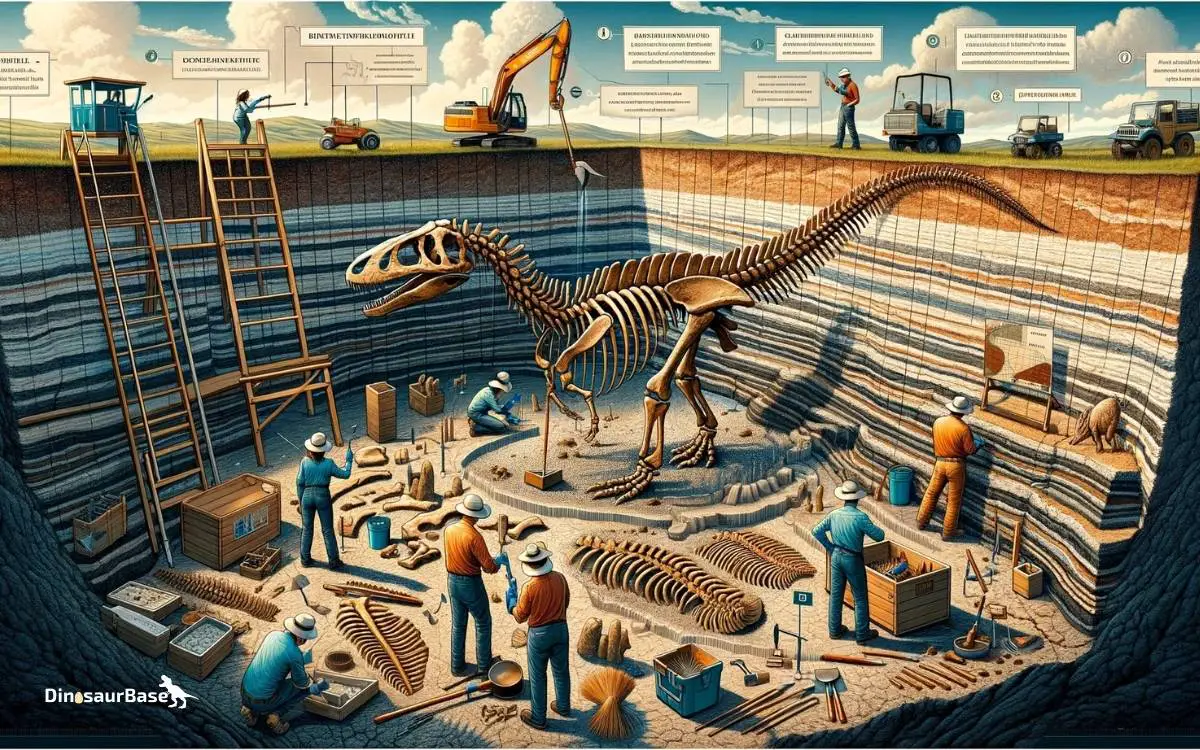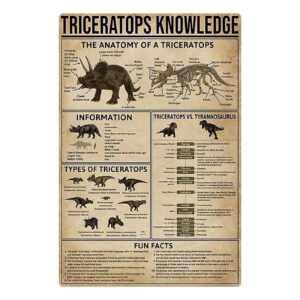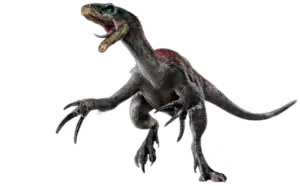What Makes Achelousaurus Fossil Excavation Successful?
Successful Achelousaurus fossil excavation relies on meticulous planning and advanced extraction techniques. Clear documentation and careful handling are crucial to preserving the integrity of the fossils.
The discovery of Achelousaurus fossils captures the fascination of both scientists and the public alike.
Paleontologists embark on an archaeological adventure, uncovering the remnants of these prehistoric creatures.
Each dig requires a blend of precise strategy and the latest technological aids to ensure the delicate fossils emerge unscathed.
Teams meticulously chart the site, logging the location of each find while gently removing the surrounding matrix.
The success of these excavations not only enriches our understanding of ancient ecosystems but also brings to life the mysteries of the Cretaceous period.
Enthusiasts and experts await these discoveries eagerly, as each bone or fragment provides a critical piece of the paleontological puzzle, telling a story millions of years in the making.

Discovering Achelousaurus: A Prehistoric Puzzle
Imagine piecing together a giant puzzle from a time when dinosaurs roamed Earth. That’s Achelousaurus, a horned dinosaur with a story embedded in stone.
Let’s dig into this prehistoric enigma to uncover what makes its fossil excavation a landmark triumph in paleontology.
Initial Discovery: Unearthing The Past
Fossil hunters seek hidden treasures buried for eons. In 1987, a significant discovery occurred in Montana, USA.
The Achelousaurus surfaced, offering a remarkable look into the Late Cretaceous period. Excavation teams painstakingly unearthed bones, reconstructing an almost forgotten history piece by piece.
- Location: Rocky landscapes where once rivers flowed.
- Tools: Brushes, chisels, and teamwork revealed the ancient bones.
- Conservation: Every fossil was carefully encased in plaster for transport.
The Significance Of Achelousaurus Fossils
The Achelousaurus fossils are a paleontologist’s dream. Each bone holds clues to million-year-old secrets. Why are these finds so crucial?
| Feature | Significance |
|---|---|
| Horns and Frill | Shed light on evolution and species variation. |
| Skull Structure | Offers insight on dietary habits and lifestyle. |
| Location of Fossils | Reveals ecosystem patterns of the Cretaceous period. |
Beyond these scientific revelations, Achelousaurus fossils inspire future generations. Children marvel at dinosaurs, igniting passion for learning and conservation.
This prehistoric puzzle continues to captivate, emphasizing that every uncovered bone is a triumph in unlocking Earth’s ancient tales.
Achelousaurus Fossil Excavation Techniques
Delving into the past to unearth the secrets of ancient creatures starts with a meticulous excavation.
Achelousaurus, a fascinating dinosaur of the Late Cretaceous, presents a unique challenge for paleontologists. Let’s explore the innovative techniques they employ.
Mapping And Planning The Dig Site
Success begins long before a shovel touches the ground. Experts use maps and research to select a promising site. They plot out the area with care, marking where fossils may lie.
- Satellite imagery: Helps identify potential sites.
- Surface surveying: Reveals initial fossil clues.
- Grid system: Keeps finds organized.
Modern Tools And Methods
In today’s digs, cutting-edge technology blends with tried-and-true techniques. Excavators use both hand tools and machinery to recover fossils safely.
- Dental picks and brushes: For fine work on delicate specimens.
- Jackhammers and rock saws: To break through harder materials.
- 3D scanning: For virtual mapping of sites.
Ensuring Preservation During Excavation
Each step of extraction must prioritize fossil safety. From revealing the first bone to lifting it out, preservation is key.
| Stage | Preservation Technique |
|---|---|
| Uncovering | Use plaster jackets to shield bones. |
| Documenting | Label fragments carefully. |
| Transport | Ensure stable conditions for moving fossils. |
Crucial Roles In Achelousaurus Excavation Teams
The discovery of an Achelousaurus fossil becomes a spectacular page in the history books. It is not just the find itself, but the synergy of different experts that marks a dig’s success.
Let’s delve into the roles each team member plays in unearthing the mysteries of this Late Cretaceous herbivore.
Paleontologists At The Helm
Leading the charge are paleontologists. These scientists are the visionaries. They pinpoint promising dig sites and identify fossils. Without their expertise, precious clues could remain buried forever.
Notable tasks include:
- Mapping the excavation area
- Labeling and categorizing each find
- Ensuring delicate fossils stay intact
The Importance Of A Skilled Excavation Crew
A talented excavation team is crucial for a successful dig. Crew members meticulously remove earth and rocks. They operate with precision, preventing damage to the fragile bones.
Key responsibilities cover:
- Preparing the dig site with tools and equipment
- Extracting fossils using specialized techniques
- Transporting specimens safely to researchers
Collaborations With Local And Global Scientists
No excavation thrives in isolation. Collaborative efforts between local and global scientists enrich the project. Sharing knowledge and resources leads to groundbreaking insights.
Teams usually engage in:
- Joint research studies
- Professional exchanges
- Publication of findings
Challenges In Extracting Achelousaurus Remains
Unearthing Achelousaurus remains is like solving an ancient puzzle. Each bone, each fragment holds clues to prehistoric life.
But, digging up these treasures comes with tough challenges. Let’s explore what makes extraction both exciting and demanding.
Navigating Natural Obstacles
Field teams face a range of natural barriers. Thick vegetation, unpredictable weather, and remote locations test their resolve. These factors often shape the success of a fossil hunt.
- Dense underbrush can make it hard to reach dig sites.
- Sudden storms may wash away weeks of work.
- Isolated areas require bringing in all equipment and supplies.
Overcoming Geological Hurdles
Many Achelousaurus fossils lie within tough rock formations. Extracting them without damage is a delicate task. Specialists use a mix of tools and techniques for this process.
| Tool | Use |
|---|---|
| Chisels | Removing surrounding rock |
| Brushes | Cleaning delicate fossils |
| Plaster jackets | Encasing for transport |
Technological Limitations
Tools make a big difference in fossil excavation. Advanced technology can boost chances of success. But, there are limits.
- Not every dig site has access to modern machinery.
- Delicate fossils may need manual methods.
- Technology is costly and not always available.
Patience and persistence are key in overcoming these challenges.
Impact Of Achelousaurus Fossil Discoveries
The discoveries of Achelousaurus fossils have made waves in the scientific community. These relics from the past offer more than a glimpse into ancient life; they bring forth a wealth of information, reshaping our understanding of the time when dinosaurs roamed the Earth.
Insights Into Cretaceous Ecosystems
Achelousaurus, a herbivore from the Late Cretaceous period, helps us unravel ecological mysteries. Each fossil discovery adds pieces to the puzzle of prehistoric ecosystems.
- Diet and habitat: Fossilized teeth and bones give clues on what this dinosaur ate. They show us what plants thrived back then.
- Coexistence: Fossil findings indicate which dinosaurs lived alongside each other. We learn about predator-prey relationships and community structures.
- Climatic conditions: Studying these fossils, we infer the climate of ancient times.
Achelousaurus In The Context Of Dinosaur Evolution
The significance of Achelousaurus is heightened as we place it within dinosaur evolution.
- Morphological features: Unique horn and skull formations hint at evolutionary adaptations.
- Genetic heritage: By comparing it with other ceratopsians, we trace lineages. We understand how these species evolved over time.
- Evolutionary timelines: The age of each fossil sets markers in Earth’s timeline, allowing us to date other finds accurately.
Influence On Public Interest And Education
Public fascination with dinosaurs gets a boost from Achelousaurus discoveries.
- Exhibitions and museums: Specimens engage and educate people of all ages. They encourage visits to museums where learning comes alive.
- Academic curriculum: Fossils serve as tangible teaching tools in classrooms. They ignite curiosity and encourage the pursuit of science.
- Media and literature: These prehistoric giants inspire books, movies, and documentaries. They captivate audiences worldwide, increasing awareness about paleontology.
Future Prospects In Achelousaurus Research
The quest to unravel the secrets of Achelousaurus continues with much anticipation and potential. Researchers believe the coming years promise remarkable discoveries.
These findings could reshape our understanding of this unique dinosaur. Here are some aspects of what lies ahead.
Potential New Dig Sites
Fresh terrain awaits paleontologists in their hunt for Achelousaurus fossils. Satellite imagery pinpoints unexplored lands, suggesting rich deposits.
Potential areas include:
- North America’s dense stratigraphic layers
- Undisturbed regions within the Two Medicine Formation
- Remote sediment beds adjacent to known sites
These new sites could yield never-before-seen specimens. Each discovery adds a piece to the evolutionary puzzle.
Technological Advances In Paleontology
Cutting-edge tools redefine how we study ancient bones.
Groundbreaking tech includes:
| Technology | Use |
|---|---|
| CT Scanners | Unveil internal structures without damage |
| 3D Imaging | Create detailed replicas for analysis |
| Laser Scanning | Map dig sites with precision |
These innovations could change the way we extract and study fossils. They promise more insights with less impact on the specimens.
Expanding The Scientific Narrative
As we dig deeper, we enrich the story of Achelousaurus. Future areas of study include:
- Behavioral patterns
- Diet and ecology
- Interactions with other species
By expanding these narratives, we paint a fuller picture. Every fossil tells a tale, linked to an ancient past. These stories await our discovery.
What Factors Contribute to a Successful Achelousaurus Fossil Excavation?
When exploring Achelousaurus fossils in North America, several factors contribute to a successful excavation. These include careful site selection, proper excavation techniques, and thorough documentation of findings. It is also crucial to work with experienced paleontologists and adhere to ethical guidelines for fossil collection and preservation.
Frequently Asked Questions For What Makes Achelousaurus Fossil Excavation Successful?
Who Discovered The Achelousaurus?
Paleontologist Scott Sampson discovered Achelousaurus in Montana, USA, in 1987.
What Did The Achelousaurus Eat?
The Achelousaurus was a herbivore, feeding on plants and vegetation.
What Factors Contribute To Successful Achelousaurus Fossil Discovery?
Factors critical for successful Achelousaurus fossil discovery include precise location scouting, use of advanced detection tools, and skilled excavation techniques. Expert paleontologists oversee the process to ensure the preservation of delicate fossils.
How Do Scientists Identify Achelousaurus Fossil Sites?
Scientists identify potential Achelousaurus fossil sites by studying geological maps, analyzing sediment layers, and researching historical data. Field surveys are conducted to search for exposed fossils or rock formations indicative of the Cretaceous period.
Conclusion
Uncovering Achelousaurus fossils is a meticulous journey, blending expertise with serendipity. A successful dig hinges on teamwork, careful planning, and the latest excavation techniques.
Each find adds a vital piece to the prehistoric puzzle, deepening our understanding of these ancient creatures.
Embrace the thrill of discovery as paleontology continues to reveal Earth’s majestic past.






